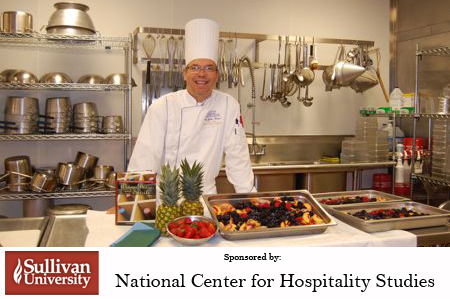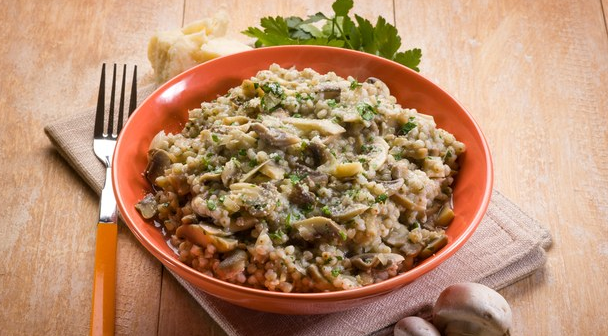I think the idea of grains scares most people. Sure we can dress oatmeal up with nuts, dried fruit and honey, or pour ourselves a bowl of Cheerios with banana, but to order and consume a bowl of kamut for breakfast, garnished with the same ingredients as oatmeal or even to consume a granola bar without idly thinking of birdseed is uncommon to a lot of us.
Grains are everywhere in our diet. Even in the whitest of bread there is a kernel of grain, albeit stripped of most if not all of its nutrition. Most of the grains we consume are produced in various degrees of degradation. Stripped of their outer shell to make processing more streamlined they often appear in foods as a pale imitation of themselves.
When we eat whole wheat pasta, and feel better about ourselves, it’s at least a step in the right direction. But the real strides can only be made if we understand the benefits of whole grains and what they can do for our diets and our health.
Far from being a treatise on the nutritional benefits of grains this column only strives to re-introduce you to your first food, harvested thousands of years ago from the close proximity of your campsite.
Emmer, or as the Italians call it, farro is one of those ancient grains that in some circles are extremely trendy. The Italian cuisine uses if from breakfast through dinner as cereal, porridge and pasta. It’s used to thicken soups, stretch proteins and bake bread. A hard wheat that still has wild relatives its ability to transform itself into whatever was needed made it an important grain for predominantly agricultural regions.
Together with another grain einkorn, emmer forms the base of our domesticated grains. The idea that they remain relevant today, thousands of years after their discovery is a testament and a revelation of their efficacy.
So what makes these ancient grains so important to us? They are one of the best sources of complex carbohydrates, essential for long term energy storage, and digestion. A steady diet with complex carbohydrates, in addition to clean proteins, fruits and vegetables and exercise will help keep weight off and energy up.
Perhaps unwittingly the diets of more agricultural countries include more grains in their traditional diets giving rise to longer lives even in the face of dire economic and social upheaval. There was a time when all civilizations followed these principles but with economic and social development those food ways have started to fade into obscurity.
The recent trend up in the use of ancient grains can be somewhat attributed to a “re-discovery” which often happens in the culinary world but I would like to believe that behind that is a more serious attempt to re-connect with a more healthful diet.
To that end we’ve started to work more closely with some of the more available grains. Kamut, quinoa, millet and brown rice are common grains for our culinary students at Sullivan University to work with. At The Sage Rabbit we feature an Ancient Grains “burger” at lunch. At once savory and meat-like it is completely vegan and has the heft of our house ground burger without the saturated fat.
Granolas made in-house, grain salads like tabbouleh and wild rice are becoming more of a focal point especially with farm to table restaurants that can source their grains directly.
If you’re still tentative, let me introduce you once again to an old friend of mine and probably one of your acquaintances as well: barley.
Remember Campbell’s Beef and Barley soup? Barley may have been one of your first transition foods as a baby from pureed vegetables to cooked barley or rice. Barley is one of the original grains, domesticated around the time of emmer and einkorn over 17,000.00 years ago. It grows well in a wide range of regions providing a reliable food source in most growing seasons.
Most barley is now used as food for animals or in the beer and whiskey making process. It is high in a number of important nutrients such as iron, thiamin and zinc and contains a large amount of dietary fiber.
While most of us are used to pearled barley, this type of grain has the same issues as white rice. While the grain of barley is whole, complete with its outer shell, it is at its highest nutrient value. The process of pearling barley strips away many layers making it easier to cook and faster to prepare but devoid of the majority of its healthfulness.
Of course I like barley as a soup base, hence my shout out to beef and barley soup. It also makes a great salad with the grain as a base and fall vegetables as the garnish. You can pair barley with dishes that would call for brown rice. Barley stands up to beef and pork, but overpowers most seafood.
Barley can be boiled, baked, simmered in stews and pureed to thicken a soup. One of the most intriguing methods of preparation is to use the risotto method to cook the barley. This slow simmering of the grain which is much like Arborio rice with its hard shell and creamy interior, allows the barley to pull flavor from its aromatics and break down just to the point of a creamy firmness with a small bite.
Barley Risotto with pancetta, caramelized onion and wild mushrooms topped with shredded parmesan
1/2 cup of barley (pearled will give you approximately 2 cups of finished product. If using hulled, which is nutritionally superior but takes longer to cook, the yield is less. Because we are using the risotto method you may end up using more than the 1 ½ cups of liquid normally used to simmer the barley for soup.
Pancetta, Italian bacon that has been cured and not smoked is a wonderful partner for the earthiness of barley and other grains. Take a half cup of small diced pancetta and slowly sweat it in a thick bottomed sauce pan. You want to render the fat without browning the bacon too much.
Once that’s done remove the bacon and reserve for later. If needed add a small bit of olive oil to the bacon fat and sweat 1 large shallot sliced thinly and 2 cloves of garlic also sliced thinly. Try not to sauté the aromatics as it will darken your barley.
Add the raw barley to this mix and begin to toast it. Have your stock or water warm ready to begin the risotto process. Once the barley is toasted begin to add liquid just to cover the grains. Stir on a regular basis and add liquid as the grains start to absorb it. Do not let the liquid run out or the grains will burn.
Depending on the age of the barley you may need to warm and add more liquid than called for. The slow cooking process is gradually drawing out the starches and breaking down the grain. As the barley cooks it will lose its bite. You want the same consistency as finished risotto, firm yet soft and rich. While you are keeping an eye on your barley, and stirring regularly, take a cup of chopped mushrooms and sauté quickly in olive oil.
Add these mushrooms to the barley when the dish is close to finishing. Deglaze the mushroom pan with some of your warm liquid and finish the cooking process with this deglazed liquid. Add back in the cooked pancetta, adjust the seasonings, check one last time for doneness and then serve with shaved parmesan and perhaps a bit of truffle oil.
John Foster is an executive chef who heads the culinary program at Sullivan University’s Lexington campus. A New York native, Foster has been active in the Lexington culinary scene and a promoter of local and seasonal foods for more than 20 years. The French Culinary Institute-trained chef has been the executive chef of his former restaurant, Harvest, and now his Chevy Chase eatery, The Sage Rabbit, in Lexington.




















